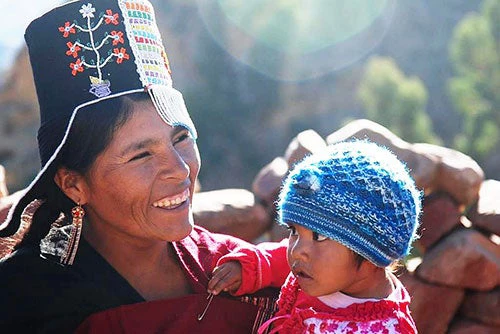
“When the company let us down, we only imposed a fine. We must be firm with companies and with vendors, otherwise they fail to fulfill their end. This is how to move the project forward”. This testimony impressed me a lot when I heard it from an indigenous woman in Bolivia, who was proud to be part of the steering committee and defend the interests of the community in the project.
Bolivia has a terrific success story to tell about encouraging rural women to take the lead in their communities and organizations and lift themselves and their families out of poverty.
Mujeres empoderadas tejiendo su futuro
There are two World Bank-financed, EMPODERAR-implemented projects in particular that are worth highlighting because even though they have different objectives, geographical areas, and targeting, they both build their success on getting women integrally involved in every stage of the process, especially with respect to managing funds. Both projects make the case that without empowered women, there is no future for rural areas.
The first project, PICAR, addresses rural and indigenous communities in Bolivia’s most vulnerable areas. It is a community driven development project (CDD), where the participating communities meet basic and productive needs by undertaking small infrastructure subprojects. As in other CDDs, the communities themselves define and prioritize the investments and manage the government funds. The results have been outstanding. So far PICAR has benefited more than 175,000 rural inhabitants through 880 subprojects. By 2019 PICAR is projected to benefit approximately 350,000 rural inhabitants.
The other project, PAR, has been helping nearly 68,000 smallholder farmers improve their access to markets since 2006. Producer organizations, which have commercial partnerships with purchasers, receive and manage government funds to improve productive infrastructure, upgrade equipment, and contract technical assistance. The subsidy helps producers meet the buyers’ requirements in terms of volume and quality of the products, improve their incomes, and consolidate their linkages to dynamic markets.
These projects are noteworthy not just because of the results they’ve achieved, but because they actively involve women in managing and accounting for the use of public resources. Both projects’ positive outcomes show that empowering women to contribute in a substantial way can make a big difference.
In both projects, beneficiaries have built management committees and social control committees that are in charge of acquiring goods for the subprojects, paying suppliers, and recording counterpart contributions and expenses in an accurate manner. In PICAR, women make up two thirds of all active members of the established committees. Many of the beneficiaries I spoke with during my field visits truly believe that the participation of women on those committees has brought a higher standard of transparency to the project and that their increased engagement has become a valuable and intangible asset for the communities. This not only brings immediate benefits to these rural areas, it also bodes well for future projects to further develop the communities.
The PAR, meanwhile, focuses on agricultural subsectors of high added value, such as cacao, in which the women are the principal actors in production and pre-processing. Several studies confirm that in the past decade, the participation of women in agriculture, both as part of the labor force and as self-employed producers, has significantly increased and benefited the region. By giving rural women the chance to get organized, assume enhanced commercial roles, and improve their earnings, the PAR project is sparking dynamism in families and regions. In the vibrant cacao communities covered by the PAR, women have become the driving force in creating prosperity through their involvement, fortitude, and capacity.
Because these stories are so powerful, our partners at EMPODERAR decided to capture them in a short documentary that you can watch at the top of this post. It was unveiled at the Annual Meetings in Lima to a global audience and we’re sharing it with readers now, to give a glimpse of rural development in Bolivia and why it is so important to empower rural women.


Join the Conversation